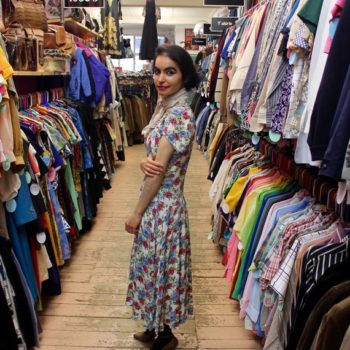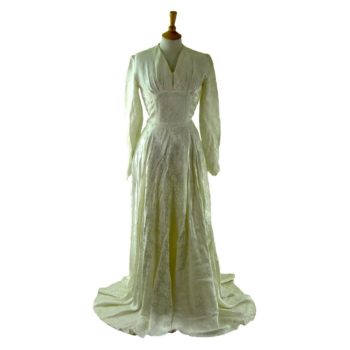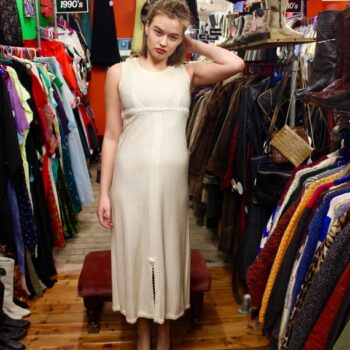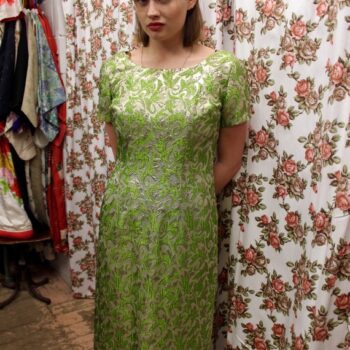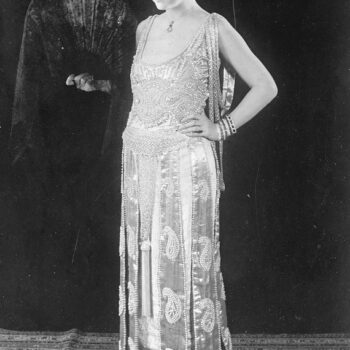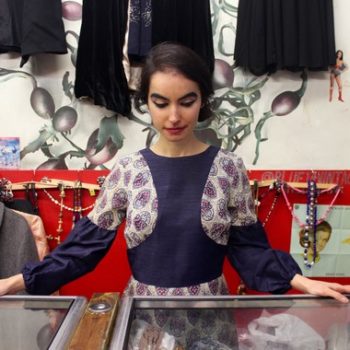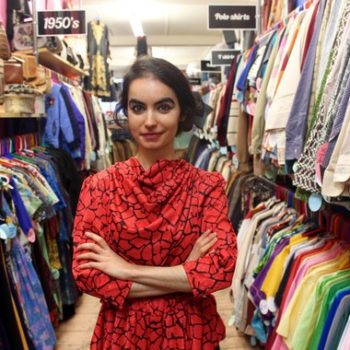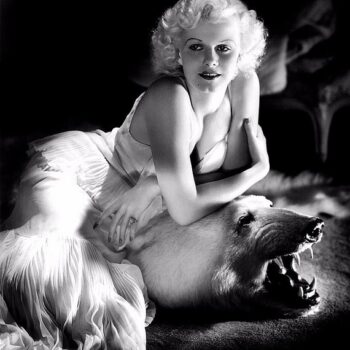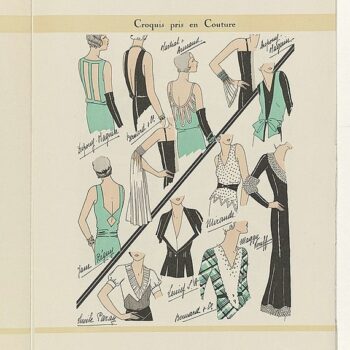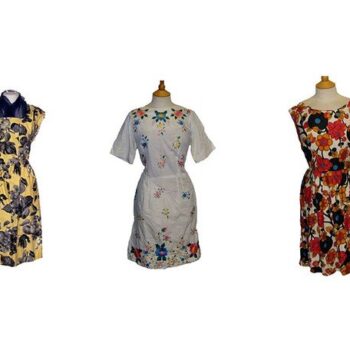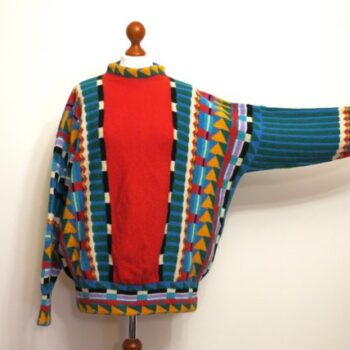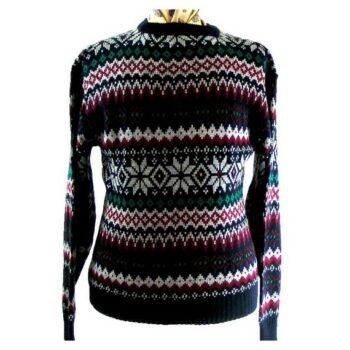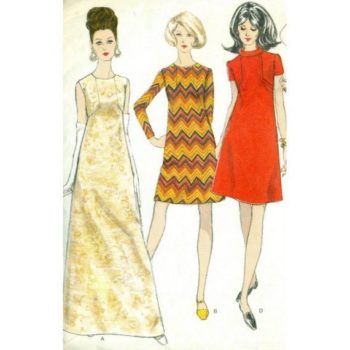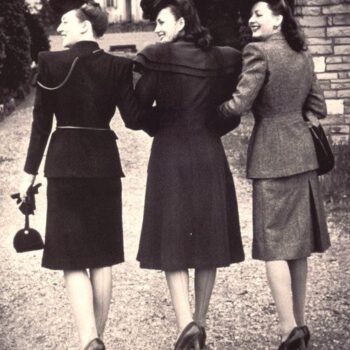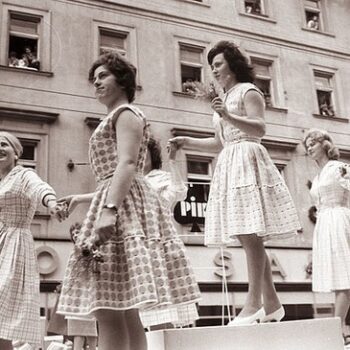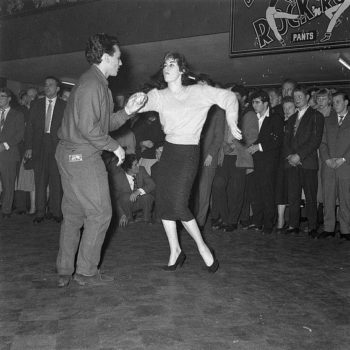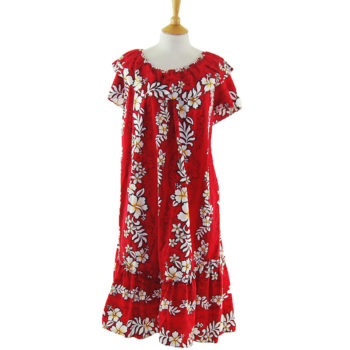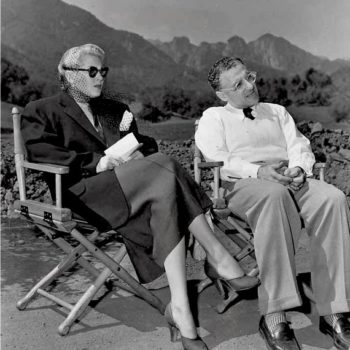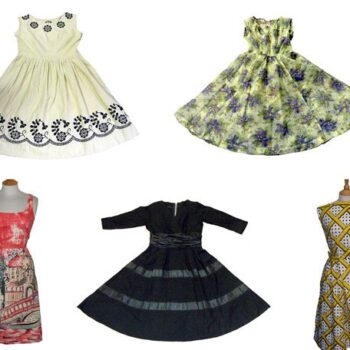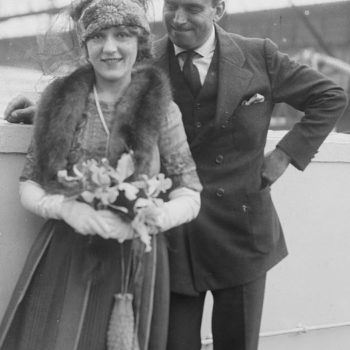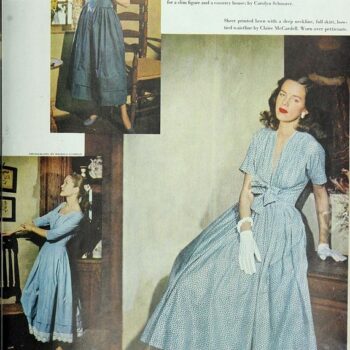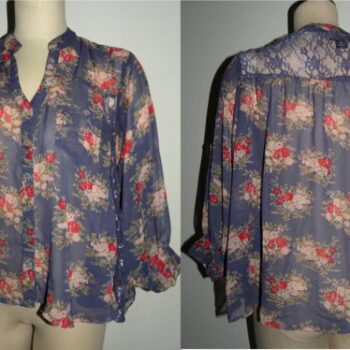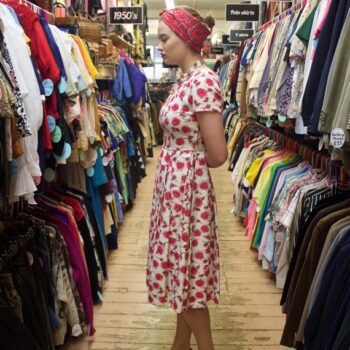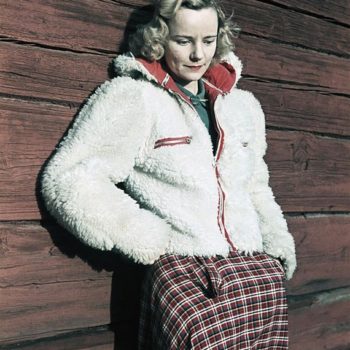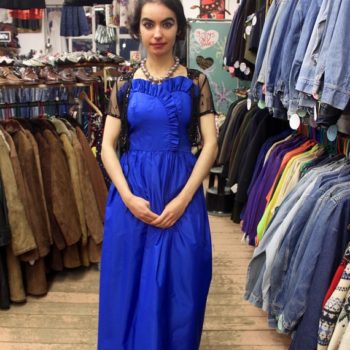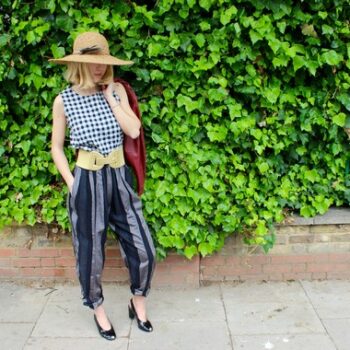1920s Day Dress Exploration
August 30, 2024The 1920s brought significant changes to women’s fashion, especially with the 1920s day dress. These new styles reflected broader societal shifts and the growing freedoms women were experiencing. The move towards more practical and comfortable clothing symbolized changing roles and attitudes during this dynamic decade.
History and Evolution of 1920s Day Dresses
Fashion in the 1920s marked a departure from Victorian influences as more relaxed and practical styles took center stage. The aftermath of World War I fostered a sense of liberation among women, shaping the distinctive style of 1920s day dresses.
Dropped waists and loose fits became popular, allowing for easier movement. These design choices reflected the rebellion against previous era’s corseted silhouettes. Flapper culture, with its emphasis on youth and a carefree attitude, was a major influence. Coco Chanel championed simplicity and comfort, greatly impacting everyday wear in 1920s fashion.
Fabrics often included lightweight and breathable materials like cotton, linen, and silk – practical choices for women entering the workforce and participating in more social activities. Embroidery, lace trims, and decorative seams added elegance without compromising functionality.
The defining dropped waist, typically at or below the hips, was paired with loose, straight cuts. Hemlines rose to just below the knee, a bold departure from floor-length dresses. These higher hemlines reflected changing attitudes and suited modern année 20s lifestyles.
Patterns frequently included geometric shapes and floral designs, with Art Deco’s influence evident in clean lines and symmetry. Accessories like cloche hats and Mary Jane shoes often completed the look of a modern 1920s woman.
These day dresses weren’t just fashion statements – they symbolized the social and cultural evolution of the time, embodying women’s growing independence and changing identities.
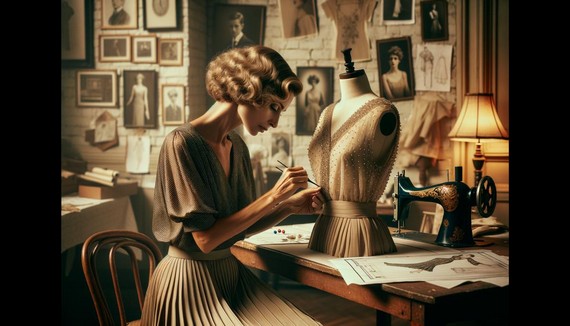
coco-chanel in her 1920s design studio, working on a day dress
Types of 1920s Day Dresses
Several distinct types of day dresses emerged in the 1920s, each with unique features and purposes:
- Afternoon dresses: Bridged casual morning attire and formal evening gowns. These semi-formal dresses suited various activities like visiting friends or shopping. They often featured bold colors or patterns, with details like contrasting embroidery or lace trims. The dropped waist and knee-length skirt allowed for easy movement.
- Tea dresses: Designed for social tea gatherings, a staple of upper-class society. The iconic white tea dress symbolized elegance and status, often made from luxurious fabrics like silk or linen. These dresses featured delicate details like sheer lace or eyelet patterns. Accessories like silk stockings, white Mary Janes, and tasteful hairpieces completed the look.
- Garden party dresses: Balanced visual appeal with comfort for outdoor events. These light-colored gowns used breathable materials like cotton voile or linen. Decorative elements such as floral appliqués and ruffles added a whimsical touch. Accessories like parasols and wide-brimmed hats provided both style and sun protection.
Colors ranged from pastels to vibrant hues, with fabrics chosen to suit the season and occasion. Decorative elements like embroidery and beadwork enhanced the garments’ appeal while reflecting Art Deco influences.
Each type of dress – afternoon, tea, or garden party – offered unique features suited to its intended setting. These versatile designs celebrated women’s newfound freedom and independence while defining the fashion of an era.
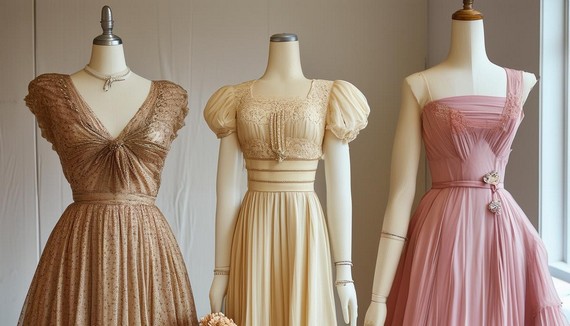
Three mannequins displaying different types of day dresses: an afternoon dress, a tea dress and a garden party dress
Accessorising 1920s Day Dresses
Accessories played a crucial role in elevating 1920s day dresses from stylish to chic. Key items included:
- Hats: The cloche hat, with its close-fitting bell shape, became iconic. Made from felt or straw and often adorned with ribbons or feathers, these hats framed the face beautifully while providing practical protection.
- Gloves: Wrist-length gloves in silk or fine leather were essential for daytime events, adding refinement to any outfit. Longer gloves extending to the elbow were common for more formal occasions.
- Jewelry: Long, beaded necklaces accentuated the era’s streamlined silhouettes. Pearls remained a timeless choice, while Art Deco-influenced pieces captured the spirit of modernity. Brooches added personality and could transform a simple dress into a statement piece.
- Footwear: Mary Jane shoes, with their single strap and low heel, balanced comfort and style. Ballet flats and T-strap heels were also popular, suiting the active lifestyles of modern 1920s women.
- Handbags: Small, often embroidered or beaded bags carried essentials while serving as decorative accents. Their designs often complemented dress patterns for a cohesive look.
- Hair accessories: Feathered headbands and decorative hair combs enhanced popular bob hairstyles, adding a touch of glamour.
These accessories complemented the simplicity of 1920s day dresses in 20s fashion , allowing women to express their style while maintaining practicality. From cloche hats to Art Deco jewelry, each element contributed to the iconic look of fashion in the roaring twenties.
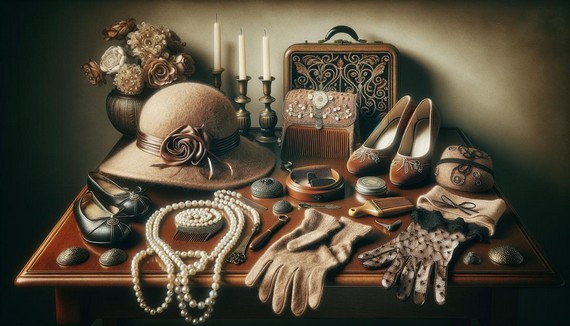
A collection of fashion accessories including a cloche hat, gloves, jewelry, and a beaded handbag
Influence of 1920s Day Dresses on Modern Fashion
The impact of 1920s day dresses fashion on modern vintage inspired fashion remains enduring, inspiring contemporary trends and collections. The relaxed silhouettes, elegant detailing, and revolutionary spirit of these vintage dresses continue to influence designers and fashion houses in vintage style fashion today.
A prominent element influencing modern dress designs inspired by 1920s fashion history is the dropped waist silhouette. This feature has resurfaced in contemporary collections, providing a fresh yet nostalgic twist to vintage outfits in modern garments. Designers like Gucci and Prada have reintroduced dropped waistlines, channeling the effortless ease of flapper styles while infusing a contemporary edge.
The use of lightweight and breathable fabrics, a hallmark of 1920s day dresses, continues to be popular in vintage inspired outfits. Designers such as Stella McCartney and Chloé have embraced materials like cotton, silk, and linen, mirroring the functional yet luxurious choices of the past. These fabrics enhance comfort and add understated elegance to everyday wear.
Art Deco motifs and geometric patterns have also found their way into contemporary collections. Brands like Versace and Balmain frequently draw on the clean lines and bold shapes characteristic of Art Deco, creating a striking visual appeal that blends past and present.
Key Elements of 1920s fashion Influence:
- Versatile day-to-night dresses
- Elegant details (lace trims, embroidery, beadwork)
- Retro-inspired accessories (beaded clutches, T-strap heels, cloche hats)
- Vintage-inspired bridal fashion
Echoes of 1920s style année 20 are particularly evident in bridal vintage fashion history. The resurgence of vintage-inspired wedding dresses featuring Art Deco beadwork, fringe details, and elegant silhouettes showcases the enduring influence of 1920s aesthetics. Designers such as Jenny Packham and Elie Saab frequently draw on the opulent yet sophisticated elements of this era in fashion history in their bridal gowns.
Current designers often reference the liberating spirit of the 1920s when crafting their vintage inspired collections. This nod to history is evident in the works of fashion luminaries like Ralph Lauren and John Galliano, who infuse their designs with the refined ethos of flapper culture. By reinterpreting these styles with a contemporary lens, they continue to celebrate the impact of the 1920s on women’s fashion, underscoring the importance of freedom and self-expression.
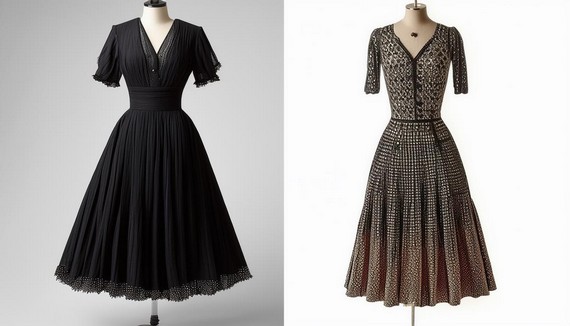
A side-by-side comparison of a 1920s day dress and a modern dress inspired by 1920s style
Cultural and Social Impacts
1920s day dresses had a significant cultural and social impact, symbolizing the changing role of women during the Jazz Age. This period saw a shift in societal norms and expectations, with women’s fashion both reflecting and driving these changes.
“The flapper style became emblematic of a broader social movement for liberation and self-expression.”
Women began to break away from traditional roles, embracing new freedoms in their personal and professional lives. The day dress, with its dropped waist, loose fit, and shorter hemline, represented a departure from the restrictive garments of previous eras.
The practical design of 1920s day dresses in 1920s fashion complemented the active lives women were beginning to lead. As they entered the workforce in greater numbers and participated more in social and civic life, women required clothing that allowed them to move freely. The relaxed fit facilitated activities such as dancing, driving, and working, aligning with women’s increasing independence and mobility.
Symbolic Elements:
- Lightweight fabrics: Functionality and comfort
- Intricate embroidery and beadwork: High fashion sensibilities
- Simplicity and elegance: Accessibility across social strata
- Geometric patterns and Art Deco motifs: Cultural reflection
These vintage dresses were symbols of a broader cultural shift. The geometric patterns and Art Deco motifs reflected the era’s fascination with new art forms and technologies. The clean lines and symmetrical designs echoed contemporary architectural and artistic trends, weaving fashion into the cultural fabric of the 1920s and an enduring legacy in twentieth-century fashion history and vintage inspired fashion.
The widespread adoption of these vintage dresses in fashion highlighted evolving aesthetics. The movement away from ornate, layered garments to simpler, more streamlined dresses paralleled societal shifts towards efficiency and progress. This transformation in 1920s fashion was indicative of broader changes in attitudes about gender and societal roles.
The impact of 1920s day dresses extended beyond the individual wearer, influencing collective perceptions and cultural norms. As women stepped out in their fashionable day dresses, they visibly challenged and changed stereotypes. The image of the modern, stylish woman became a symbol of the new societal order, one where women had a greater voice and more freedom to define their paths.
In conclusion, the cultural and social implications of 1920s day dresses were significant. They were more than just fashion statements; they were symbols of a shift in women’s roles and societal expectations. These dresses reflected the liberation and empowerment of women, encapsulating the spirit of an era defined by change, progress, and modernity.
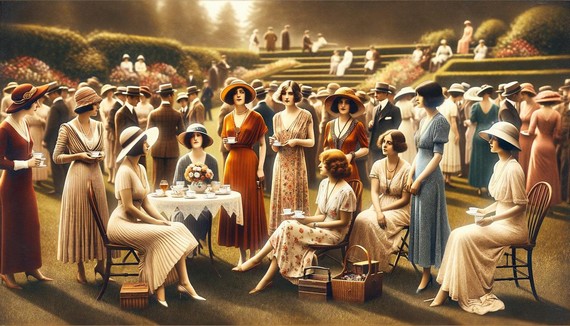
A group of diverse women at a social gathering




